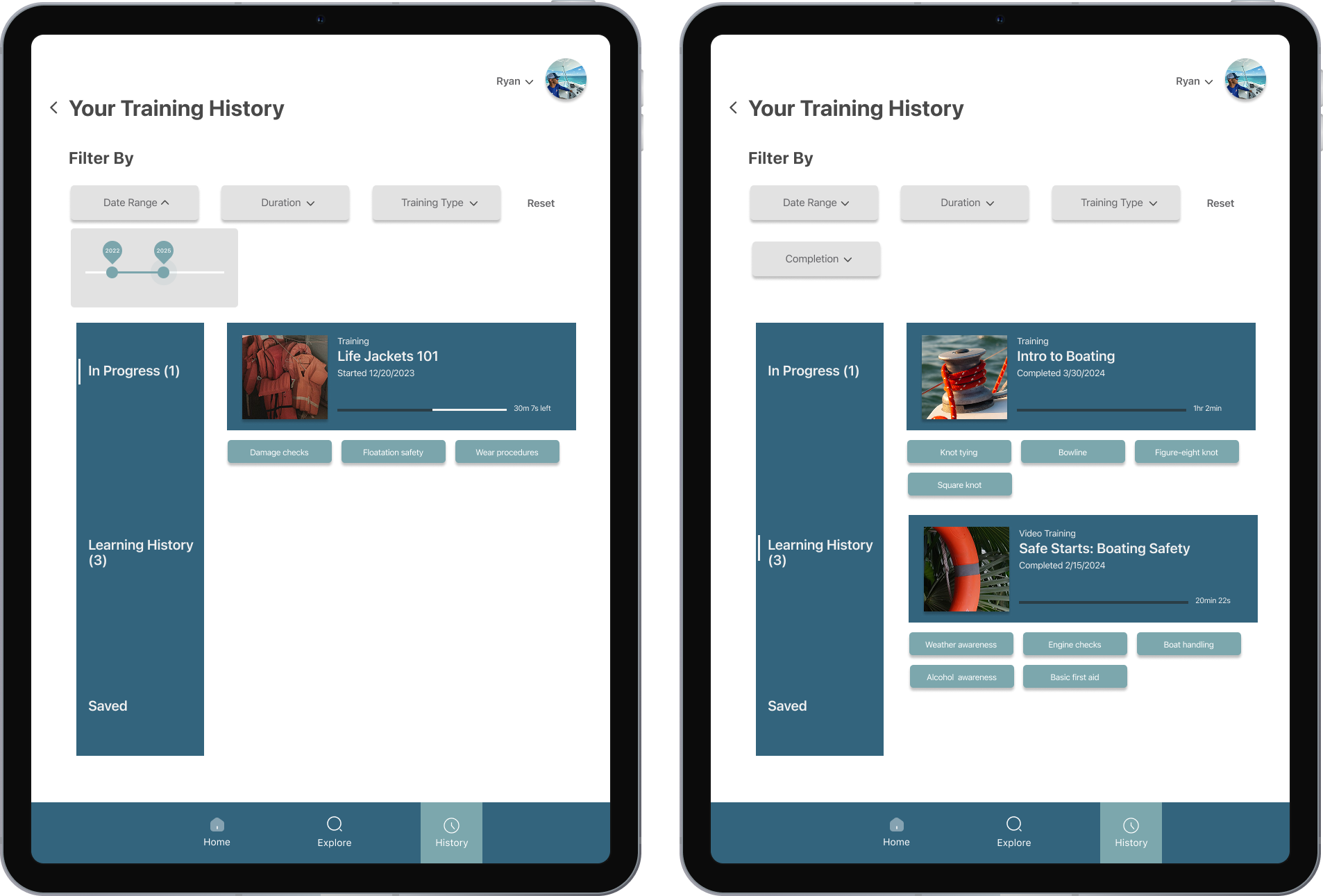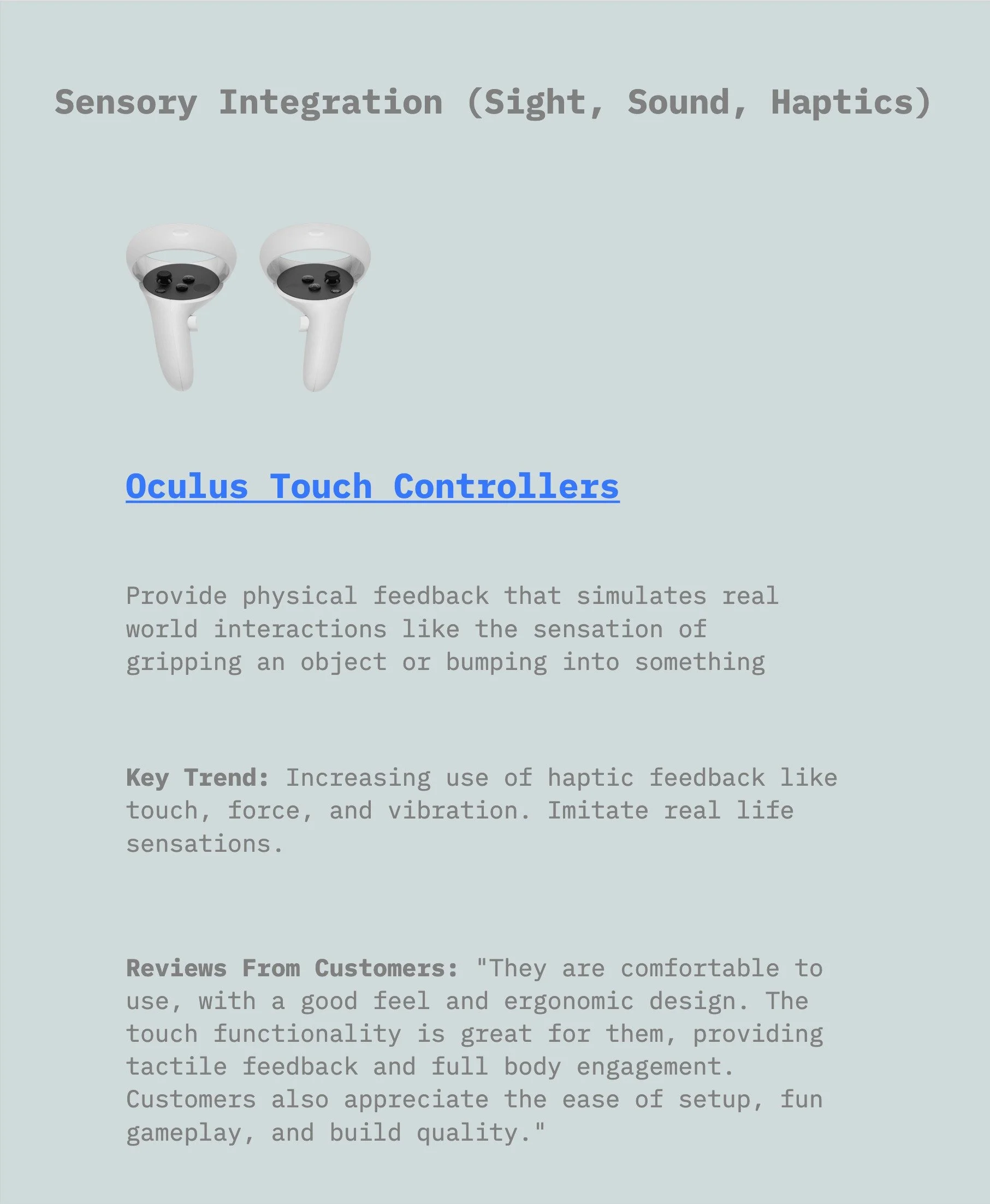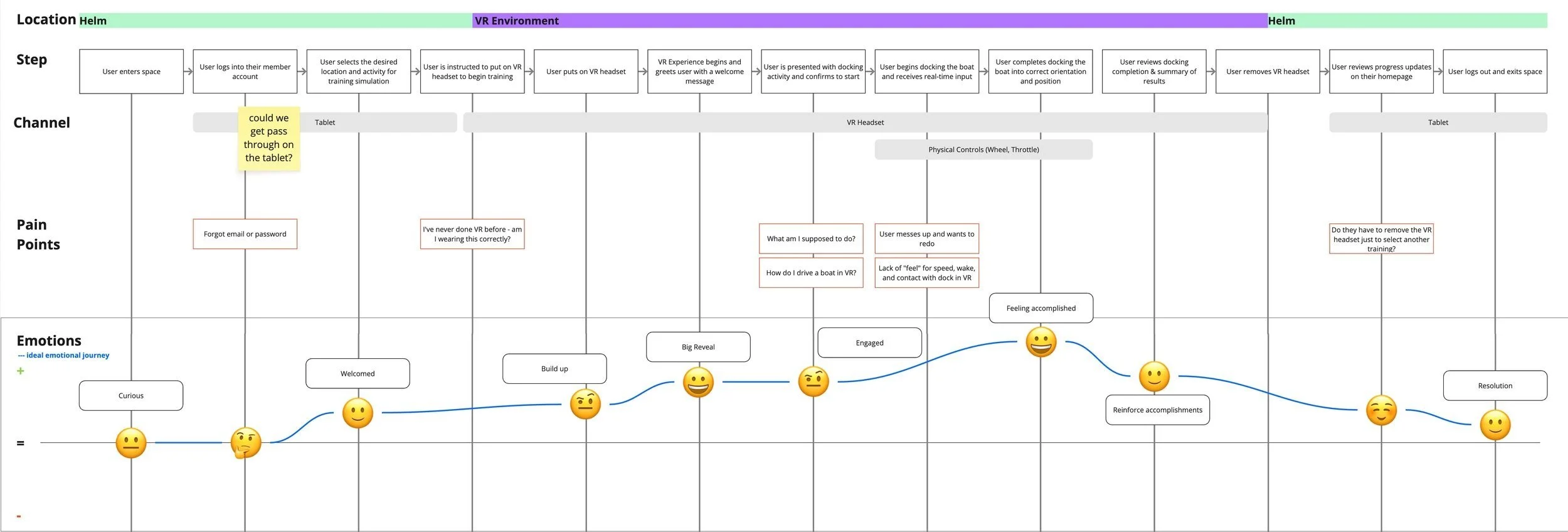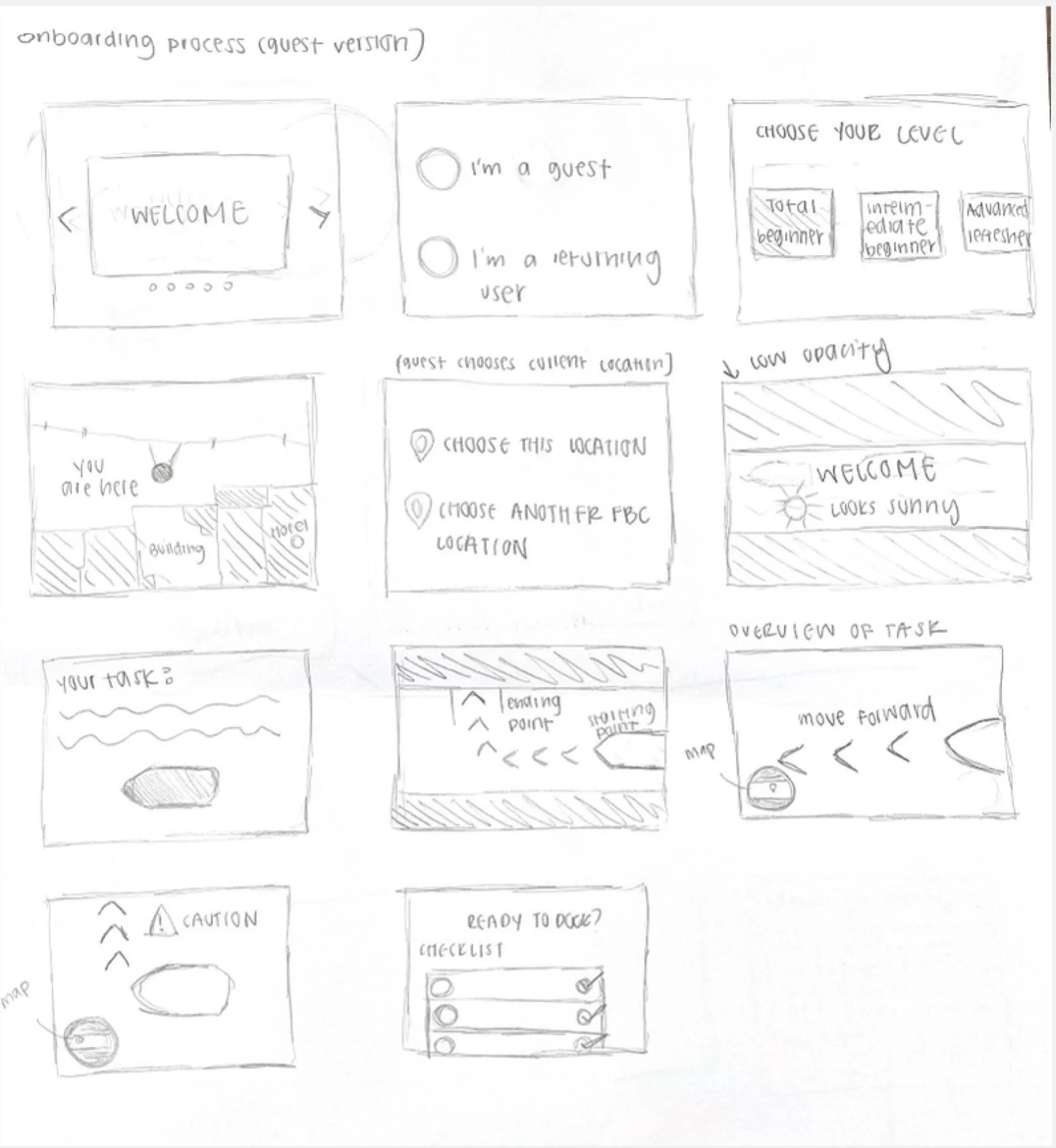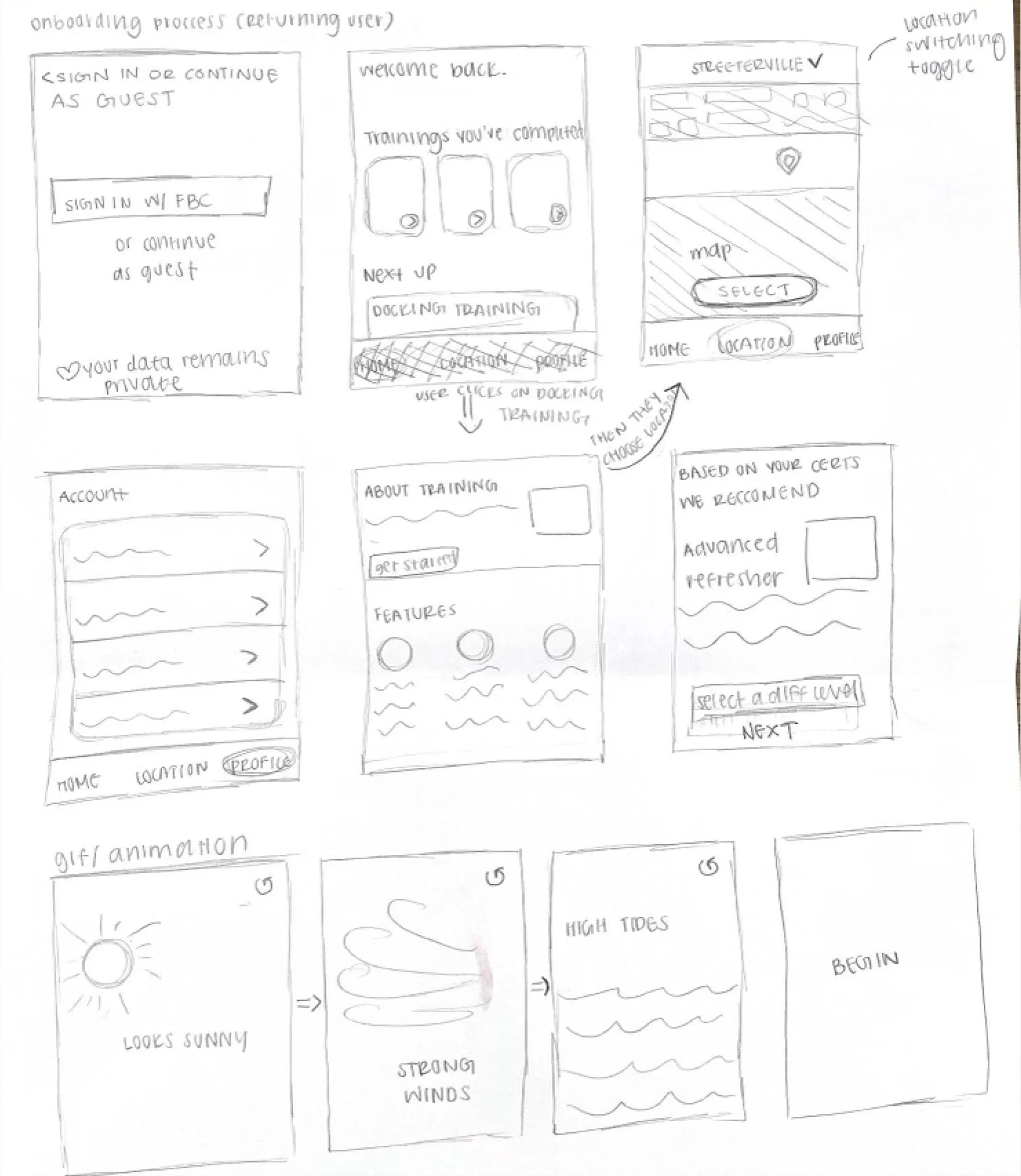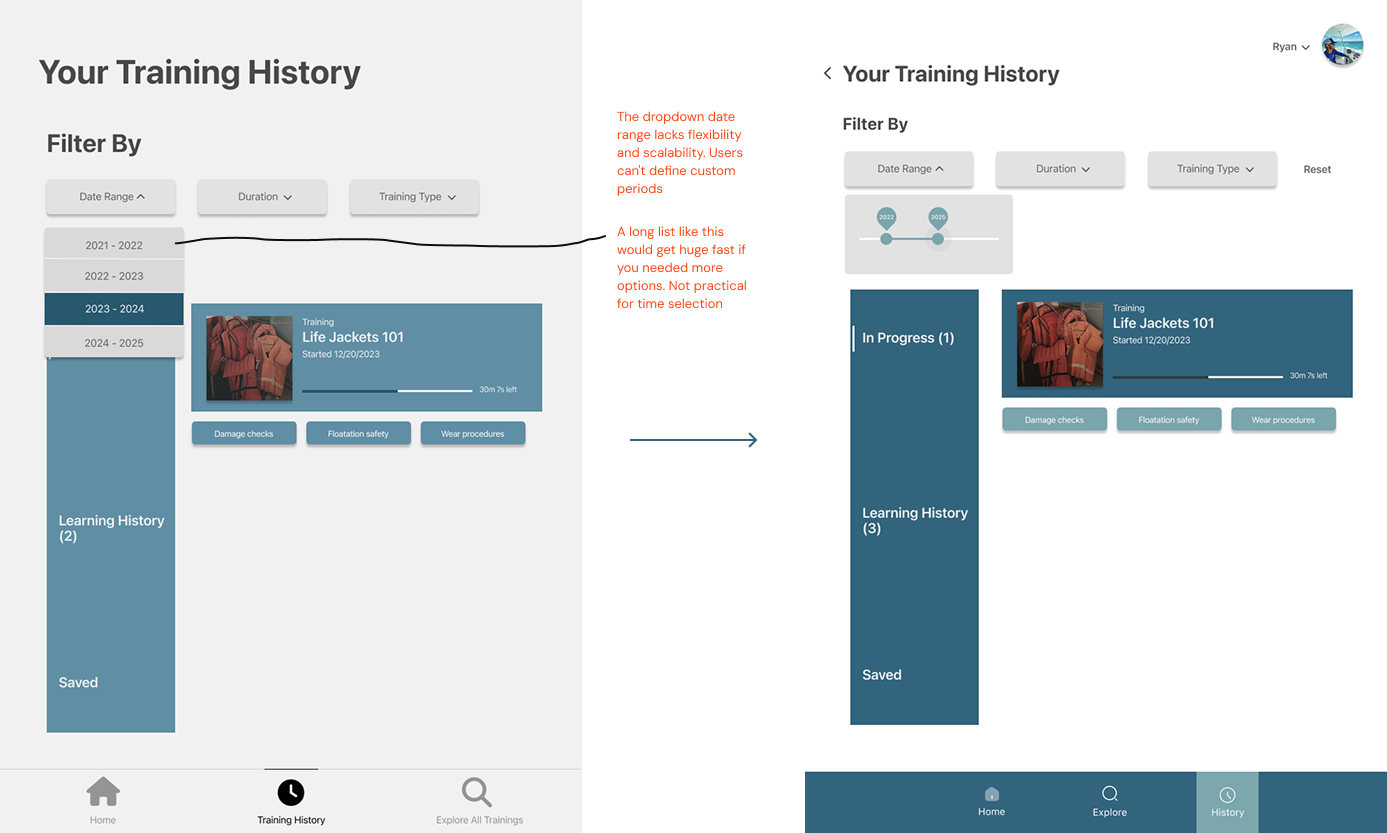Transforming boating education by offering a safe, low-pressure training experience through a virtual reality simulation. Empowering both new boaters and seasoned captains to build confidence, sharpen skills, and navigate with assurance before hitting the water.
Brunswick - VR Training Simulator
Project type: Spring Co-Op
My role: UX Designer
Team: 1 product manager, 2 designers
Tools: Adobe illustrator, Figma, Miro
Skills: Information architecture, competitive analysis, user journeys mapping, wireframing, prototyping, interaction design
There's a clear gap between real-world boating and structured skill development. Freedom Boat Club lacks a centralized platform for tracking progress, leaving users without a sense of improvement or direction. Captains are unable to focus on specific skills or revisit trainings based on past performance, making consistent growth difficult to acheive.
Problem
Freedom Boat Club offers a personalized, immersive, training experience that helps boaters strengthen their skills in a safe, simulated environment. By combining VR with real helm controls, users can practice real world scenarios tailored to their needs.
*I specifically designed the pre-VR experience to guide users in clarity, helping them set goals and get the most out of their time in the simulator
Solution
View Recent Activity: Users see a dashboard showing recently completed trainings at a glance
Tap for Training Details: Tapping a training reveals the completion date, a summary of the session, and the skills mastered
Get Personalized Recommendations: A "Recommended for You" section highlights in-progress trainings and suggests new ones based on user progress
Filter Training History: Users can filter past trainings by date range, duration, and training type
Track In-Progress Training: The “In Progress” tab displays all trainings currently being worked on
Review Completed Sessions: The “Learning History” tab shows all completed trainings for easy reference
Browse All Trainings: Users can view a complete list of available trainings in the system
Filter by Preferences: Trainings can be filtered by location, training type, and topic for easier exploration
Preview Training Summary: Clicking on a training reveals a description and what to expect from the session
Choose Your Mode: Users can select Assisted Mode for real-time guidance or Free Drive Mode to practice independently without assistance
scroll to see more features and final prototypes!
RESEARCH & ANALYSIS
To begin, I conducted some market research to understand the virtual reality space today. I split this research into 3 categories:
Market Research
Visuals/Immersive Experience:
General VR Training Simulators:
Sensory Integration:
IDEATION & ARCHITECTURE
Creating a user journey map was essential for identifying pain points and understanding potential highs and lows across the VR experience.
User Journey Map
Creating a user flow was important for understanding how users transition from the Ipad interface into the VR experience
User Flow
Mapping out the information architecture helped me determine the most intuitive flow of screens and identify key elements to include before users entered the simulation
Information Architecture
Initial Designs & Feedback
Lofi Sketches
Onboarding Process (Guest Version)
Onboarding Process (Returning User Version)
Midfi Wireframes
Midfi Wireframes & User Testing
BRINGING IT ALL TOGETHER
Final Screens
Upon logging in, returning users are directed to a dashboard showing Recent Activity and Recommended Trainings
Each recent activity module can be expanded to view training name, completion date, and skills mastered
A button at the bottom right allows users to view their past trainings completed
Clicking View Past Trainings opens three tabs: In Progress, Learning History, and Saved Trainings
Filters at the top allow users to sort by date range, training duration, training type (self-paced, instructor led, etc.), and completion status
Trainings dynamically update based on selected filters
Users can explore trainings and filter by location, training type (VR simulation, article, etc.), and topic (anchoring, docking, etc.)
Results are updated dynamically in real time based on selected filters
After selecting a training, users are taken to a preview page where they can view what is to be expected from the training
Next, users will see VR safety guidelines and headset usage tops before continuing
Users can then choose between Assist Mode (with highlighted pathways and hints) or Free Drive (no guidance, allowing independent practice)
After completing the VR training, users return to the iPad interface
They can review their docking path, momentum, collisions, and total docking time
REFLECTION
This project was my first time designing for a completely different industry, boating and marine technology. When I learned that I’d be working on a VR experience, I was definitely intimidated at first. However, as the project unfolded, it became one of the most fulfilling and enjoyable design challenges I’ve worked on.
I collaborated closely with another designer to make sure the pre-VR screens fit seamlessly into the overall VR training ecosystem. I also had the chance to step into the VR environment myself and test the physical helm controls, which gave me a deeper understanding of the all in all user experience.
Throughout the process, I learned how valuable it is to work closely with engineering teams and continuously iterate on designs. Feedback from our design manager was also instrumental in refining usability, and reinforced how much great design comes from collaboration and constantly testing.



